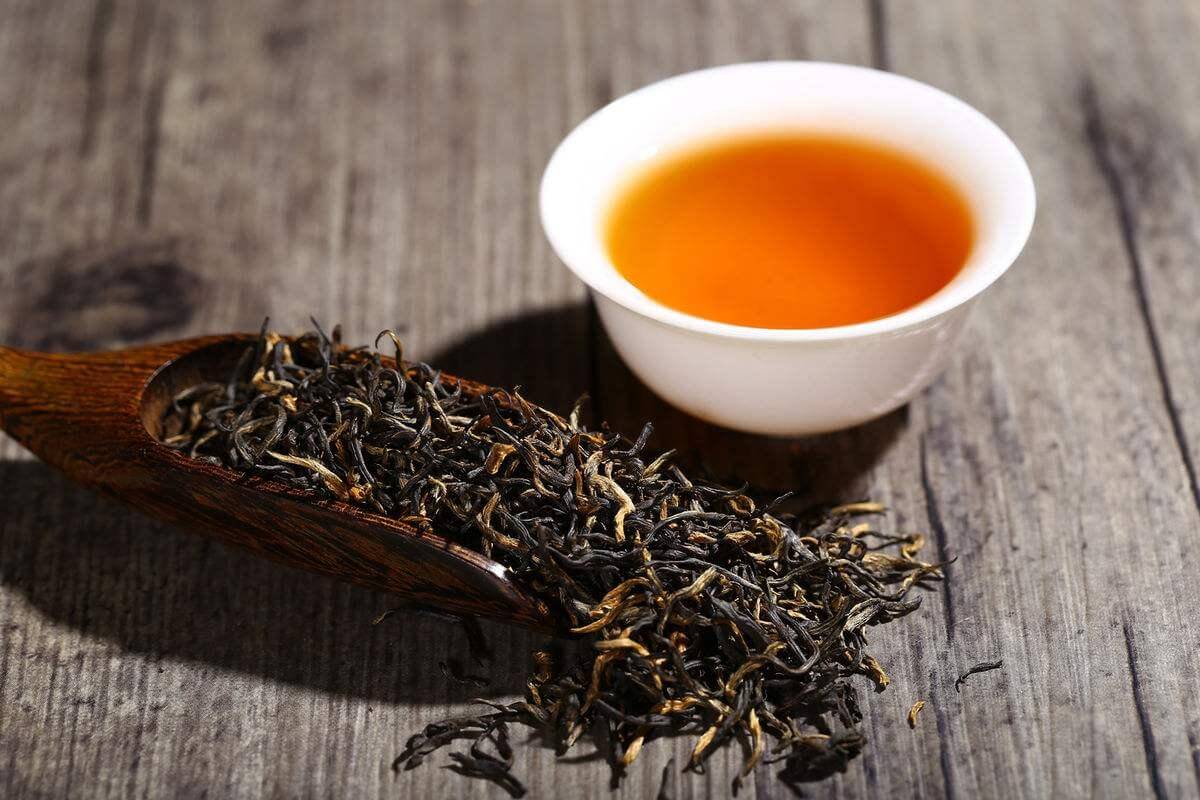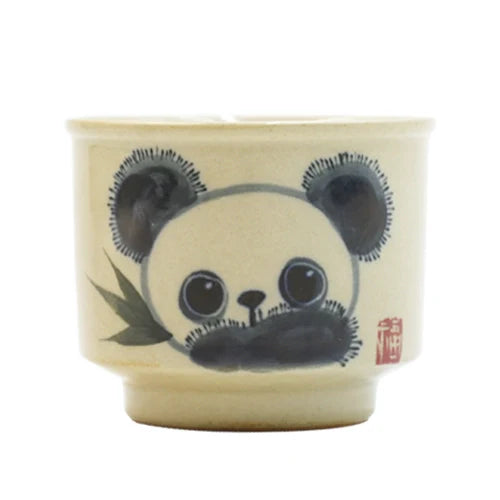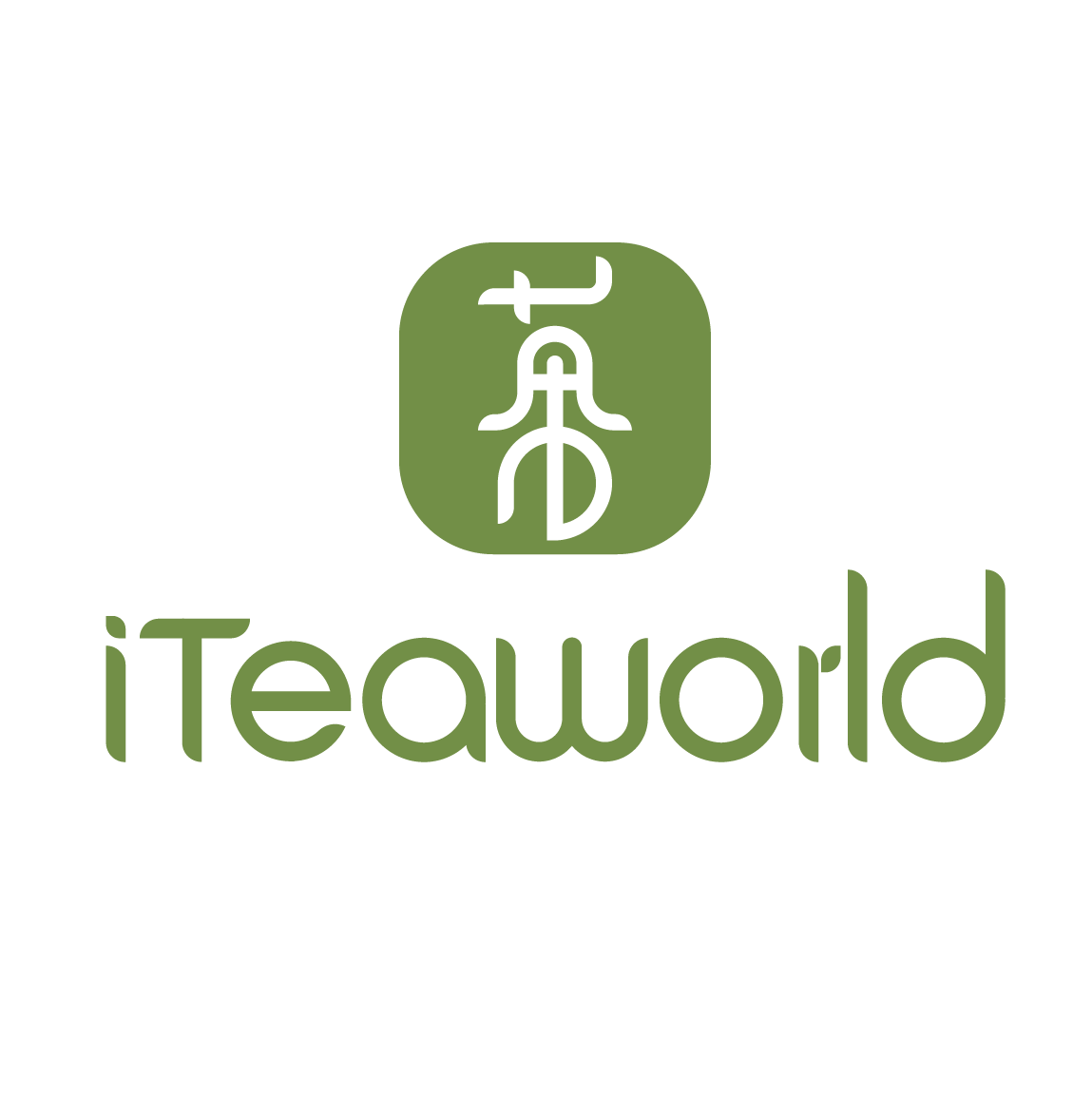
Лучшие улуны для любителей чая улун: 5 лучших вариантов
Улун — традиционный китайский чай. Он известен как полуферментированный чай, упоминается как «чай Цин» среди шести основных категорий чая. Существует большое разнообразие улунских чаев, среди которых выделяются такие, как Да Хун Пао, Те Гуань Инь, Дань Цун, Шуй Сянь и Жоу Гуй . Чашка улуна обладает стойким ароматом и восхитительным сладким послевкусием, что делает его любимым выбором среди любителей чая.
Как истинный любитель мира листового чая улун , я залез на различные чайные форумы и впитал идеи опытных ценителей. У меня была возможность попробовать разные чаи, либо купленные мной самим, либо у друзей.
Для начала давайте получим общее представление о чае улун :
Классификация чая улун:
На основе происхождения:
① Северный Фуцзяньский улун (Да Хун Пао)
② Южный Фуцзянь Улун (Аньси Те Гуань Инь)
③ Гуандунский Улун (Финикс Дан Конг)
④ Тайваньский улун (Дун Дин Улун)

На основе метода обработки:
① Обжаренный тип (северный улун провинции Фуцзянь и гуандунский улун)
② Тип с сильным ароматом (Южный Фуцзяньский улун)
③ Тип слабого аромата (Южный Фуцзяньский улун)
На основе внешнего вида:
① Стрип-форма (Феникс Дэн Конг)
② Форма полушара (Те Гуань Инь, Дун Дин Улун)
③ Упакованный чай улун (чай Бацзяо Тин Лун Сюй)
④ Форма для блока (чай с нарциссовым пирогом)
В зависимости от уровня ферментации:
① Слабоферментированный чай (тип Те Гуань Инь с легким ароматом)
② Умеренно ферментированный чай (Те Гуань Инь, Ушанский чай, Феникс Дань Цун и т. д.)
③ Сильноферментированный чай (Дунфан Мейрен)
Советы:
>> Хотя классификация чая улун разнообразна и сложна, основная классификация в основном основана на категориях 1 и 2.
>> По основным характеристикам сухого чая улун можно условно разделить на две основные категории: обжаренный и необжаренный.
Типичные характеристики чая улун:
- Богатый аромат
- Мягкий и сладкий вкус, сохраняющийся после многочисленных завариваний
- Листья достигают определенной степени зрелости, что придает сухому чаю относительно грубый вид.
Существует множество разновидностей чая улун, которые можно разделить на пять основных сортов, таких как Anxi Tieguanyin, Phoenix Narcissus, Dongding Oolong, Dahongpao и Oriental Beauty. К счастью, я попробовал все эти сорта. Вот небольшой обзор вкусов 5 лучших китайских листовых чаев улун, которые я имел удовольствие попробовать, и надеюсь, что это послужит справкой для других:
● Тегуаньинь — Аньси, Фуцзянь.
● Феникс Даньцун – Чаочжоу, Гуандун.
● Каменный чай Уи (Дахунпао) – гора Уи, Фуцзянь.
● Восточная красавица — Тайвань
● Дундин Улун – Тайвань.
Если вы хотите узнать больше о чае улун, я предлагаю вам обратиться к этой записи в блоге: Руководство по покупке рассыпного чая улун . Она содержит исчерпывающие знания о китайском чае улун.
Я упомянул несколько очень известных чаев улун выше. Далее я поделюсь 5 лучшими китайскими чаями улун, которые я пробовал:
Топ 1: Анси Тегуаньинь
Тегуаньинь — вершина среди улунских чаев, которая может похвастаться качественными характеристиками скрученных чайных листьев, тяжелым и однородным внешним видом, песчано-зеленым цветом и прочной круглой структурой. Его листья напоминают головы стрекоз, лягушачьи лапки, спирали и многое другое. После заваривания Тегуаньинь раскрывает потрясающий золотисто-янтарный настой с естественным ароматом, похожим на орхидеи. Его вкус сладкий, свежий и насыщенный, оставляющий длительную сладость, которая сохраняется на губах и языке. Известный тем, что выдерживает многократные заваривания, его часто называют «имеющим аромат, сохраняющийся после семи завариваний».
Прочитайте эту статью, узнайте о пользе чая Тегуаньинь для здоровья: Польза чая Тегуаньинь для здоровья

Происхождение произрастания:
Аньси расположен в холмистом районе на юге провинции Фуцзянь.
История Происхождение:
Производство чая в Аньси восходит к концу династии Тан, широко культивировалось в периоды Сун и Юань и процветало во времена династий Мин и Цин.
Характеристики:
Чай имеет толстые, крепкие полоски, округлые и напоминающие головы стрекоз, тяжелые с жесткими веточками, аккуратно расположенной корой на конце веточки, при этом большинство листьев закручиваются к задней части, демонстрируя блестящий темно-зеленый цвет (при современной обработке красные края в основном удаляются).
Цвет ликера:
Чистый и ярко-желтый

Вкус:
Деликатный глоток раскрывает густой, сладкий и свежий чайный суп с едва заметным вращением у основания языка. При медленном глотании он оставляет плотную, тянущуюся сладость с бесконечным очарованием.
Оценка: чай Тегуаньинь против чая Мотояма
Стебли чая Мотояма сегментированы, напоминая бамбуковые шесты. Из-за обработки может возникнуть явление, когда мякоть ломается, а кожица остается нетронутой. Однако Тегуаньинь ломается чисто, демонстрируя удивительно ровное поперечное сечение, напоминающее разрез, сделанный ножом. Наблюдая за частицами, Тегуаньинь, как правило, крупнее и крепче по сравнению с чаем Мотояма, и после заваривания осадок чая Мотояма не такой густой, как у Тегуаньинь.
(Объяснение чая Мотояма : для опытных любителей чая, знакомых с Тегуаньинь, чай Мотояма не является новым термином, но в последнее время к нему часто относятся неблагосклонно. Его внешний вид и вкус чайного супа похожи на Тегуаньинь, что заставляет многих недобросовестных торговцев выдавать чай Мотояма за Тегуаньинь, обманывая потребителей. Это привело к тому, что его насмешливо называют «чаем-младшим братом Тегуаньинь». Если вы обеспокоены покупкой чая Мотояма, я рекомендую покупать настоящий Тегуаньинь напрямую с места его происхождения у iTeaworld, бренда, которому вы можете доверять.)
Топ 2: Фэнхуан Даньцун
Fenghuang Dancong, также известный как «Guangdong Narcissus», — это тип полосатого чая и известный исторический чай. Он происходит из отдельных растений вида Fenghuang Narcissus. Он назван «Dancong» из-за того, что его собирают и обрабатывают по отдельности, в то время как «Fenghuang Dancong» относится к различным исключительным отдельным растениям. Он обладает уникальными качествами: «красивый по форме, изумрудный по цвету, душистый по аромату и сладкий по вкусу». Fenghuang Dancong также известен как «парфюм в чае», имея в общей сложности 79 натуральных профилей ароматов. Среди них десять самых известных ароматов включают: желтую гардению, медовую орхидею, магнолию, ночной жасмин, миндаль, гардению, османтус, цветок имбиря, жасмин и корицу.

Происхождение произрастания:
Гора Фэнхуан, уезд Чаоань, провинция Гуандун
Историческое происхождение:
История этого места восходит к концу правления династии Южная Сун и насчитывает более 900 лет.
Характеристики:
Плотный и крепкий, полосатый вид, однородный и вертикальный, желто-коричневого цвета и глянцевой поверхности, часто с красными точками киновари. После заваривания он издает длительный чистый аромат, в частности, отчетливый натуральный аромат орхидеи. Края листьев имеют малиново-красный цвет, в то время как тело листа ярко-желтое, известное своим уникальным горным характером с зелеными листьями и красными краями.
Цвет ликера:
Чистый и ярко-желтый цвет (имеется в виду аромат Honey Orchid)

Вкус:
Насыщенный, мягкий, освежающий, оставляющий длительную сладость и влажность во рту.
Оценка:
Я настоятельно рекомендую чайные листья Honey Orchid среди десяти лучших ароматов Fenghuang Dancong. Его вкус отличается заметной сладостью «батата», сопровождаемой интенсивным и стойким ароматом гардении и меда. Если вы спросите мою рекомендацию, я предлагаю попробовать этот конкретный сорт, Fenghuang Dancong Oolong Tea (Mi Lan Xiang), доступный на iTeaworld.
Топ 3: Да Хун Пао
В тысячелетней чайной культуре Китая чай Wuyi Rock, несомненно, пользуется наивысшим престижем. Среди них Da Hong Pao из Wuyi считается одним из лучших, заслужив такие титулы, как «Лучший ученый в чае» и «Король чая Wuyi». Его название происходит от ярко-красного цвета всего чайного дерева, когда прорастают ранние весенние чайные почки, напоминающие издалека красную мантию, отсюда и название «Da Hong Pao».
Если вы хотите узнать более подробную информацию о да хун пао , прочитайте эти статьи:
Все о да хун пао: виды, происхождение и как завариватьПольза чая дахунпао для здоровья

Происхождение произрастания:
Гора Уи, провинция Фуцзянь
Историческое происхождение:
Легенда гласит, что это название возникло во времена династии Мин и имеет более чем 400-летнюю историю.
Характеристики:
Сухой чай имеет коричневато-черный цвет, плотно завязанные полоски с относительно влажным видом. Он испускает слабый древесный аромат, напоминающий маслянистые орехи. Мокрые листья имеют влажный коричневато-черный цвет, слегка морщинистые, с листьями одинакового размера, испускающими легкий ботанический аромат.
Цвет ликера:
Яркий оранжево-желтый

Вкус:
Мягкий и сочный при вдыхании, сладкий и густой. Он может похвастаться богатым ароматом с высоким и стойким ароматом орхидеи, демонстрируя выраженную каменистую сущность.
Оценка:
Da Hong Pao выдерживает многократные заваривания; я заваривал его семь или восемь раз, и аромат сохранялся. Чтобы в полной мере насладиться Da Hong Pao, нужно следовать ритуалу чая Gongfu, используя небольшой чайник и маленькие чашки, потягивая медленно, чтобы по-настоящему ощутить дзенское очарование вершины чая Wuyi Rock.
Попробуйте пробник из 4 лучших сортов чая улун. >>>
Топ 4: Восточная красавица
Этот уникальный чай родом исключительно из Тайваня, выделяясь как один из самых сильно ферментированных среди улунских чаев, ферментация варьируется от 60% до поразительных 75-85%. Название предположительно происходит от британских торговцев чаем, которые подарили этот чай королеве Виктории. Когда чайные листья красиво закружились в стеклянном чайнике, она была так очарована, что окрестила его «Чаем восточной красоты».

Происхождение произрастания:
Тайвань
Историческое происхождение:
19 век
Характеристики:
Аккуратный и однородный, с одним бутоном и двумя листьями, с легким завитком, напоминающим связанный букет, похожий на цветы. Листья имеют мягкую, глянцевую и блестящую нижнюю сторону.
Цвет ликера :
Яркий и живой, с янтарно-чайным оттенком.

Вкус:
Вкус округлый, насыщенный, богатый, мягкий, сладкий и гладкий, с крепким и чистым ароматом, оставляющим длительное, освежающее и продолжительное послевкусие.
Оценка:
Так как Oriental Beauty является наиболее сильно ферментированным среди полуферментированных чаев, новички могут обнаружить, что его вкус поразительно похож на черный чай, что вполне нормально. По сравнению с другими чаями улун, Oriental Beauty сначала сладкий на вкус, без горечи или терпкости, что делает его подходящим для новичков. Если вас заинтриговал чай Oriental Beauty, рассмотрите возможность просмотра эпизода в документальном сериале «Чай в Китае», который исследует его вкусовые характеристики. Кроме того, мастер чая Сюй Яолян подробно обсуждает процесс приготовления чая в документальном фильме.
Топ 5: Дун Дин Улун
Тайваньский Дун Дин Улун, широко известный как чай Дун Дин, — это известный полуферментированный чай, выращиваемый на Тайване и названный в честь горы Дун Дин. Основное сырье для Дун Дин Улун поступает с чайных деревьев Цин Синь Улун на горе Дун Дин. Регион может похвастаться среднегодовой температурой 22°C, обильной водой, пышной растительностью и окутан туманом и облаками круглый год — идеальные условия для роста чайных деревьев. Однако из-за крутого рельефа сбор урожая затруднен, что приводит к ограниченному и исключительно ценному производству.

Происхождение произрастания:
Городок Лугу, Тайвань
Историческое происхождение:
Легенда с давней историей гласит, что в пятом году эпохи Сяньфэн династии Цин (1855 г.) Линь Фэнчи, житель поселка Лугу в Наньтоу, привез из Фуцзяни саженцы чая Уишань, которые постепенно превратились в современный чайный сад Дун Дин на горе Дун Дин.
Характеристики:
Плотно скрученные гранулы, образующие полусферические завитки с глянцевым темно-зеленым цветом.
Вкус:
Насыщенный, мягкий и сладкий, с интенсивным горным ароматом, демонстрирующим стойкий цветочно-фруктовый аромат.
Цвет ликера:
Медово-желтый, прозрачный и яркий

Оценка:
При осторожном смаковании тонкий баланс сладости и кислотности наполняет вкус. Легкая ферментация чайных листьев и сладость от легкой обжарки дополняют друг друга, создавая изысканную гармонию. Кроме того, натуральный молочный аромат придает бархатистую гладкость, похожую на молочный чай.
Распространенные формулы для чая улун:
【Османтус + Чай Улун】: питание и увлажнение легких
【Чай Лонган + Улун】: тонизирует кровь и сохраняет здоровье
【Лимон + Чай Улун】: Очищение от жара и помощь пищеварению
【Персиковый + улунский чай】: улучшает красоту и питает
【Сладкая груша + чай улун】: облегчение кашля и увлажнение легких
【Личи + Чай Улун】: детоксикация и улучшение красоты
【Кумкват + Консервированная слива + Чай улун】: Помощь пищеварению и облегчение кашля
【Виноград + Восковая ягода + Лимон + Чай Улун】: снимает жар и стимулирует аппетит
Попробуйте эти подходящие формулы с листовым чаем премиум-класса от iTeaworld.
Как заваривать улун?
Выбор чайного сервиза:
Чайник из фиолетовой глины и белая фарфоровая гайвань — это обычно используемая посуда для заваривания чая улун. Сосуд для заваривания должен иметь крышку. Для заваривания и дегустации чая улун предпочтительнее использовать небольшие чашки или пиалы, поскольку «небольшие сосуды сохраняют аромат нетронутым, не рассеиваясь, что позволяет получить более концентрированный вкус».

Соотношение чая и воды:
Соотношение чая и воды: 1:20-30
5 граммов чая + 100-150 миллилитров воды
Вы можете регулировать количество чая в зависимости от предпочитаемого вкуса.
Учет температуры воды:
Чай улун, будучи относительно зрелым в сырье, содержит множество ароматических веществ с высокой температурой кипения, таких как цветочные и фруктовые ароматы. Поэтому для заваривания чая улун рекомендуется использовать свежекипяченую воду, близкую к 100°C. Более высокая температура воды приводит к лучшему извлечению аромата, большему выходу чайного сока и более концентрированному вкусу, подчеркивая уникальное очарование чая улун. Если температура воды низкая, аромат и вкус могут показаться слабыми.
Примечание: подогрев чайника и чашек перед завариванием, а также заливка горячей воды во время заваривания — все это методы повышения температуры и усиления аромата и свойств чая.

Частота заваривания:
● Слабоферментированные улуны (например, Тегуаньинь):
Первая заварка должна длиться около 40 секунд, вторая заварка — 30 секунд, затем для последующих заварок время настаивания следует увеличить на 15 секунд.
● Сильно окисленные улуны (например, Да Хун Пао):
- Первую заварку можно приготовить немедленно.
- Через 10 секунд замачивания суп будет готов.
- Увеличивайте время каждый раз на 10 секунд в будущем.
Ключевые моменты при заваривании чая улун: используйте сильные стороны и избегайте слабых!
- Используйте сильные стороны: сильное заваривание усиливает аромат, высокая температура и медленное наливание уменьшают улетучивание аромата, раскрывая аромат чая улун.
- Избегайте недостатков: Не лейте воду против чайных листьев. Вместо этого лейте воду по стенке емкости, чтобы избежать горечи.
Какую пользу для здоровья приносит регулярное употребление чая улун?

【Потеря веса】
Дубильная кислота в зеленом чае тесно связана с жировым обменом, эффективно помогая в потере веса и выступая в качестве чая для похудения.
【Активация автономной нервной системы】
Определенные вещества в чае Улун могут эффективно усиливать активность вегетативной и парасимпатической нервной системы, вызывая чувство психического расслабления и общего комфорта.
【Устранение нефти】
Сочетание чая улун с жирной пищей не только увеличивает чувство сытости, но и помогает устранить жирность, придавая освежающий аромат чая, способствуя более комфортному и здоровому приему пищи.
【Снижение уровня холестерина】
Активные соединения в чае Улун могут эффективно растворять жиры. Более того, улучшая энергетический обмен веществ, он также может подавлять рост холестерина в организме, что делает его полезным чайным напитком.
【Профилактика кариеса】
Полифенолы в зеленом чае могут ингибировать ферменты, образующие зубной налет, предотвращая образование зубного налета и кариеса при употреблении после еды.
【Против старения】
Чай улун содержит различные активные вещества, в том числе вещество, которое значительно повышает активность фермента СОД, играющего важную роль в замедлении старения и поддержании здоровья кожи.
Группы запретов: кому нельзя пить чай улун?

- Избегайте употребления чая улун натощак .
- Избегайте употребления чая улун перед сном .
- Не пейте остывший чай улун .
- Чай улун не подходит людям, страдающим анемией .
- Чай улун не рекомендуется употреблять тем, кто страдает запорами .
- Женщинам следует избегать употребления чая улун во время менструации .
Предположение
Независимо от того, какой вид улуна вам нравится, я рекомендую вам попробовать эти пять лучших улунских чаев, вы не пожалеете. Если вы не знаете , где купить лучший китайский листовой улун , я предлагаю вам проверить бренд листового чая iTeaworld , который предлагает эти 5 видов чая. Вы можете сначала попробовать их пробник улуна . Купив этот пробник чая, вы сможете попробовать 4 разных известных листовых улуна одновременно. Конечно, если вы хотите купить определенный вид улуна по отдельности, вы также можете найти его на веб-сайте.
Делиться





























































